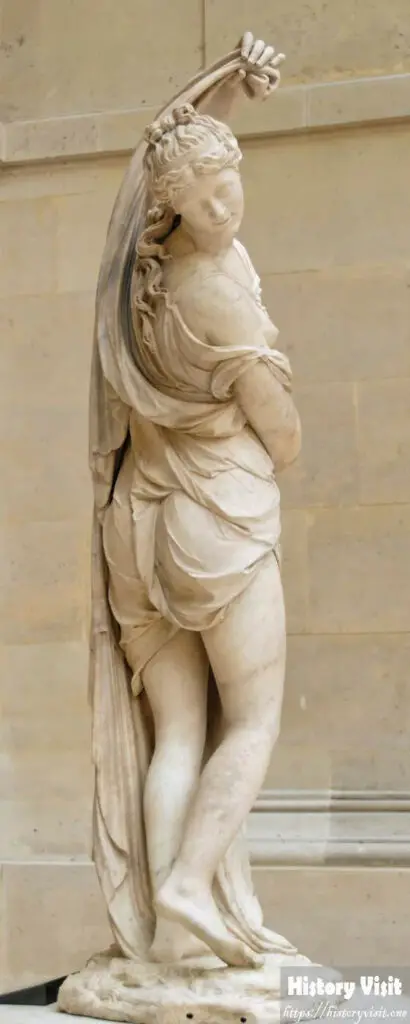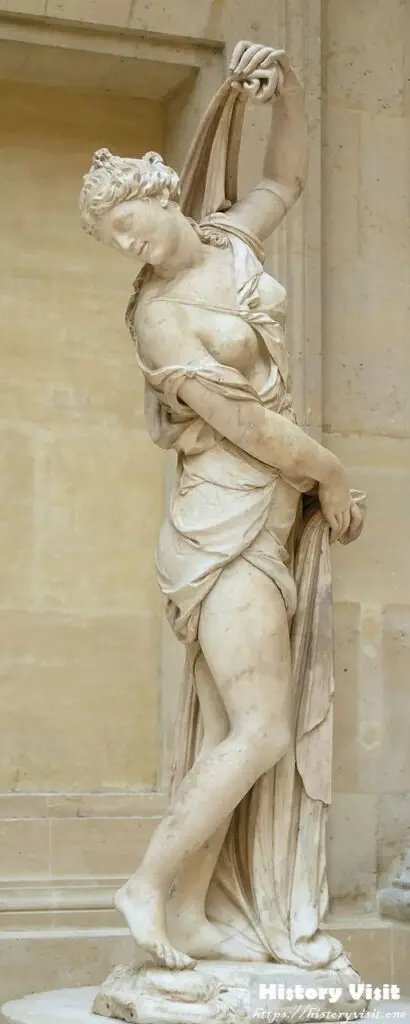The Allure of Elegance: François Barois and the Callipygian Venus (1683-86)

In the grand tapestry of art history, certain masterpieces emerge not only as reflections of aesthetic brilliance but also as embodiments of cultural narratives and timeless allure. Among these treasures stands François Barois’s ‘Callipygian Venus,’ a sculpture that graced the artistic scene between 1683 and 1686, weaving together myths, historical facts, and the unparalleled talent of its creator. As we embark on a journey to explore the myths and rumors surrounding the Callipygian Venus, the life of François Barois, the reasons behind this sculptural marvel, and its lasting impact on the world of art, we delve into the intricacies of a masterpiece that has endured through the ages.
The Callipygian Venus, named after the Greek term “callipygos,” meaning “beautiful buttocks,” has roots in ancient mythology. Venus, the goddess of love and beauty in Roman mythology, has been depicted in various forms throughout art history. However, the Callipygian Venus takes a specific focus on a particular attribute, celebrating the idealized beauty of the female form. In mythology, Venus is often associated with love, desire, and fertility, embodying the epitome of feminine charm.
Rumors and tales surrounding the Callipygian Venus have only added to its mystique. Whispers of secret admirers commissioning the sculpture as an ode to a beloved muse and tales of hidden symbolism in the curves of the goddess abound. Whether rooted in reality or the product of imaginative embellishment, these stories contribute to the allure of the sculpture, turning it into more than a representation of Venus but an embodiment of desire and beauty.

The historical context of the late 17th century adds another layer to the story of the Callipygian Venus. This period witnessed the flourishing of the Baroque style, characterized by a penchant for grandeur, emotion, and a fascination with the human form. Against this backdrop, François Barois emerged as a sculptor of considerable talent, making a name for himself in the artistic circles of Paris.
François Barois, born in 1656, began his artistic journey in the vibrant cultural milieu of France. His early life was marked by an affinity for the arts, and he honed his skills as a sculptor through apprenticeships and formal training. Before the creation of the Callipygian Venus, Barois had already established himself as a skilled artist, creating sculptures that showcased his ability to capture the nuances of the human form with grace and precision.
The decision to sculpt the Callipygian Venus was undoubtedly influenced by the prevailing artistic trends of the time, as well as Barois’s desire to explore the aesthetic possibilities of the female form. The story behind the sculpture remains veiled, but it is believed that Barois sought to celebrate the timeless concept of beauty and sensuality. The choice to focus on the buttocks as a central motif reflects a deliberate celebration of a specific aspect of feminine allure, echoing classical ideals of beauty.
Barois’s dedication to crafting the Callipygian Venus is a testament to his commitment to artistic expression. The sculpture, carved from marble, exhibits a mastery of form and an exquisite attention to detail. Barois’s skill in capturing the subtle curves and contours of the female body, coupled with the sensual pose of Venus, adds an undeniable allure to the sculpture. The craftsmanship is evident in every inch of the marble, as Barois breathes life into stone, creating a sculpture that transcends its materiality.
The impact of the Callipygian Venus on the world of art is profound. François Barois’s masterpiece became a symbol of Baroque aesthetics, capturing the zeitgeist of an era fascinated with the emotive power of the human form. The sculpture’s celebration of beauty, desire, and sensuality resonated with audiences, influencing subsequent generations of artists who sought to explore the complexities of the human experience through their creations.

As we gaze upon the Callipygian Venus, we are invited to reflect on the enduring allure of beauty and the timeless appeal of the female form. François Barois’s contribution to the world of art through this sculpture is not merely a representation of Venus but an exploration of desire, sensuality, and the celebration of aesthetic ideals. The impact of the Callipygian Venus extends beyond the confines of its creation, leaving an indelible mark on the trajectory of artistic expression.
In conclusion, the Callipygian Venus by François Barois stands as a beacon of aesthetic brilliance and timeless allure. The myths and rumors surrounding its creation add layers of intrigue, while Barois’s talent and dedication shine through in the meticulous craftsmanship of the sculpture. As a celebration of beauty and sensuality, the Callipygian Venus continues to captivate and inspire, inviting us to appreciate the enduring power of art to transcend time and resonate with the human spirit.



Keep on working, great job!
I am extremely impressed with your writing abilities and alkso with the
structure to your weblog. Is that this a paid theme or did you modify it yourself?
Either way stay up the nice high quality writing, it is uncommon to per a nice weblog like this one nowadays..